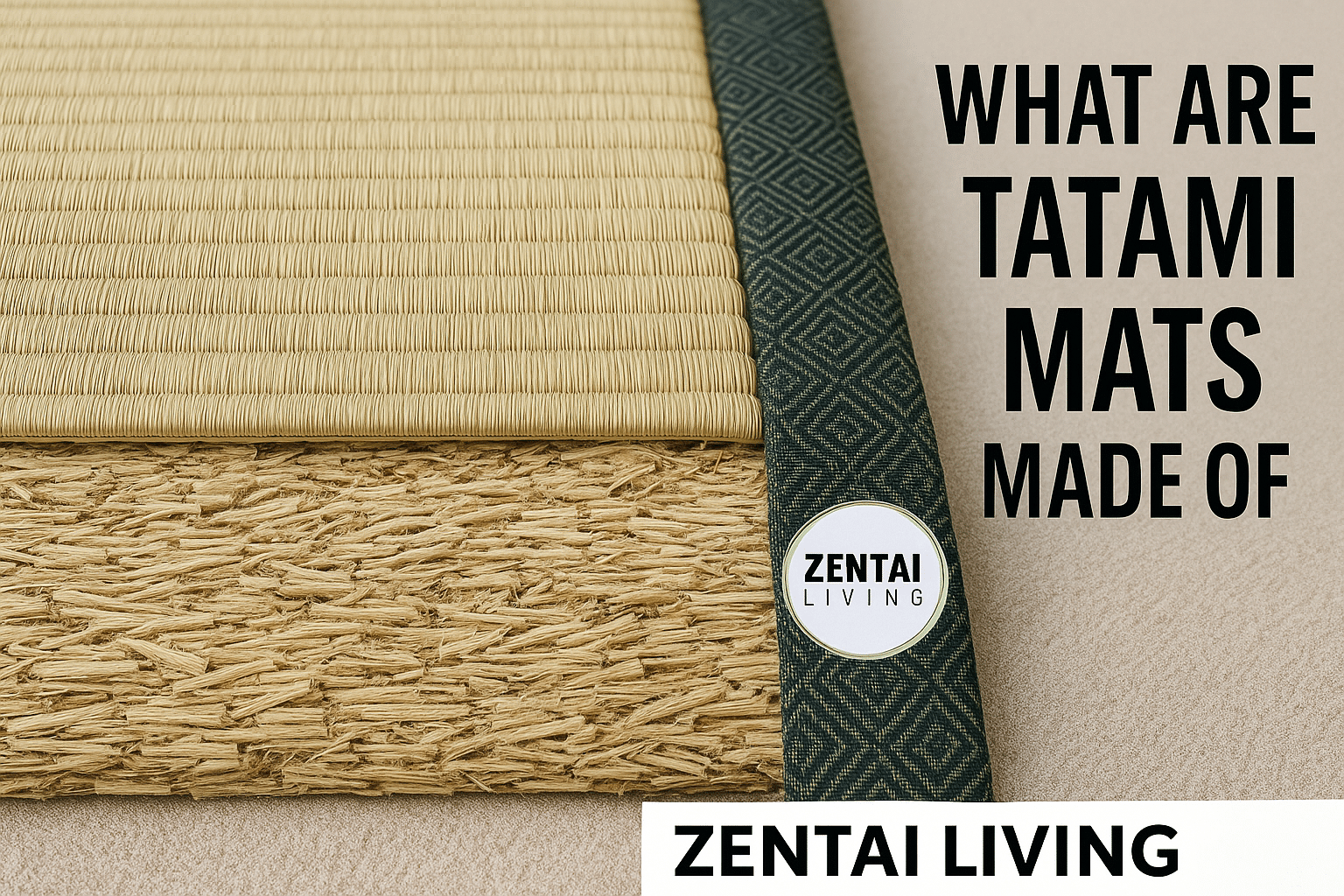
Tatami mats are more than just flooring — they are a cultural icon of Japan, representing simplicity, harmony, and a deep connection to nature. Whether used under a Japanese futon, in a meditation space, or as a base for tea ceremonies, tatami mats have been cherished for centuries.
But have you ever wondered exactly what tatami mats are made of and why their composition makes them so special? In this guide, we’ll explore the materials, craftsmanship, and cultural significance of tatami mats, plus why modern homeowners still choose them for comfort and style.
Historically, tatami mats are made from three main natural components:
The surface of a tatami mat is woven from igusa, a type of rush grass cultivated specifically for tatami production. The grass is dried, then tightly woven to create a smooth yet textured surface.
Benefits of Igusa:
Natural scent that promotes relaxation
Cooling in summer, insulating in winter
Durable and resistant to everyday wear
Traditionally, the core of a tatami mat is composed of tightly compressed rice straw. This gives the mat its firmness and slight cushioning.
Advantages:
Breathable and moisture-absorbing
Provides natural insulation
Eco-friendly and biodegradable
The edges of the tatami are reinforced with a fabric border, often made of cotton, hemp, or synthetic fibre. This not only protects the edges but also adds a decorative touch.
Creating a traditional tatami mat is a skilled craft. The process involves:
Harvesting Igusa: Rush grass is harvested, dried, and sorted for quality.
Weaving the Cover: Skilled artisans weave the grass into tight, even patterns.
Preparing the Core: Rice straw is layered and compressed to achieve the desired thickness.
Binding with the Border: The woven cover is stretched over the core, then bound with fabric edging.
This meticulous process ensures each tatami mat has the durability and feel that has been valued in Japanese homes for centuries.
While traditional tatami mats still exist, modern versions sometimes use alternative materials for added durability or affordability:
Compressed Wood Chipboard Cores – More rigid, lighter to transport.
Polystyrene Foam Cores – Lightweight and moisture-resistant, ideal for humid climates.
Synthetic Rush (Vinyl Igusa) – Easy to clean, good for commercial spaces.
These modern adaptations allow tatami mats to be used in a wider variety of environments while maintaining their signature look.
Tatami mats aren’t just for flooring — they are often used under Japanese futon mattresses or shikibuton to create a complete Japanese style bed setup.
Benefits of Using Tatami with a Futon:
Provides a firm, supportive sleeping surface
Enhances breathability for the mattress
Adds traditional style and natural aroma to the bedroom
Many minimalists prefer a floor bed setup with a tatami base for both comfort and aesthetics.
In Japan, tatami flooring is more than functional — it’s deeply symbolic.
Room Measurement: Traditionally, room sizes in Japan are measured by the number of tatami mats that fit the space.
Etiquette: Certain activities, such as tea ceremonies, martial arts, and meditation, are conducted on tatami.
Aesthetic Harmony: Tatami complements the minimalist principles of Japanese interior design.
Choosing mats made with traditional materials offers several advantages:
Eco-Friendly: Made from renewable, biodegradable materials.
Healthy Indoor Environment: Igusa helps regulate humidity and purifies the air.
Comfortable Underfoot: Firm yet cushioned feel.
Temperature Regulation: Keeps cool in summer, warm in winter.
Timeless Design: Fits into both traditional and modern interiors.
To extend the life of your mats:
Vacuum regularly to remove dust.
Avoid excessive moisture to prevent mould.
Rotate periodically to ensure even wear.
Sun-dry occasionally to refresh the natural scent.
Mats can be used in various spaces beyond traditional Japanese rooms:
Bedrooms: As a base for futons or low bed frames.
Meditation Rooms: Creating a calm, grounded atmosphere.
Yoga Spaces: Natural cushioning for floor exercises.
Living Areas: As floor seating zones for guests.
Tea Corners: Honouring Japanese tea ceremony traditions.
At Zentai, we offer authentic mats made from natural igusa and premium materials. Designed to work seamlessly with our Japanese futon mattresses and solid timber bed frames, they bring both tradition and function into Australian homes.
We prioritise:
Sustainable sourcing
High-quality craftsmanship
Designs that merge traditional Japanese aesthetics with modern needs
Tatami are more than just a floor covering — they are a connection to centuries of Japanese tradition, crafted from natural materials like rush grass and rice straw. Whether you choose them for their beauty, health benefits, or cultural significance, they offer a unique way to bring harmony and comfort into your home.
If you’re looking to create a Japanese style bedroom or enhance your space with authentic tatami, explore Zentai’s range for high-quality, sustainable options.
Follow our Socials: